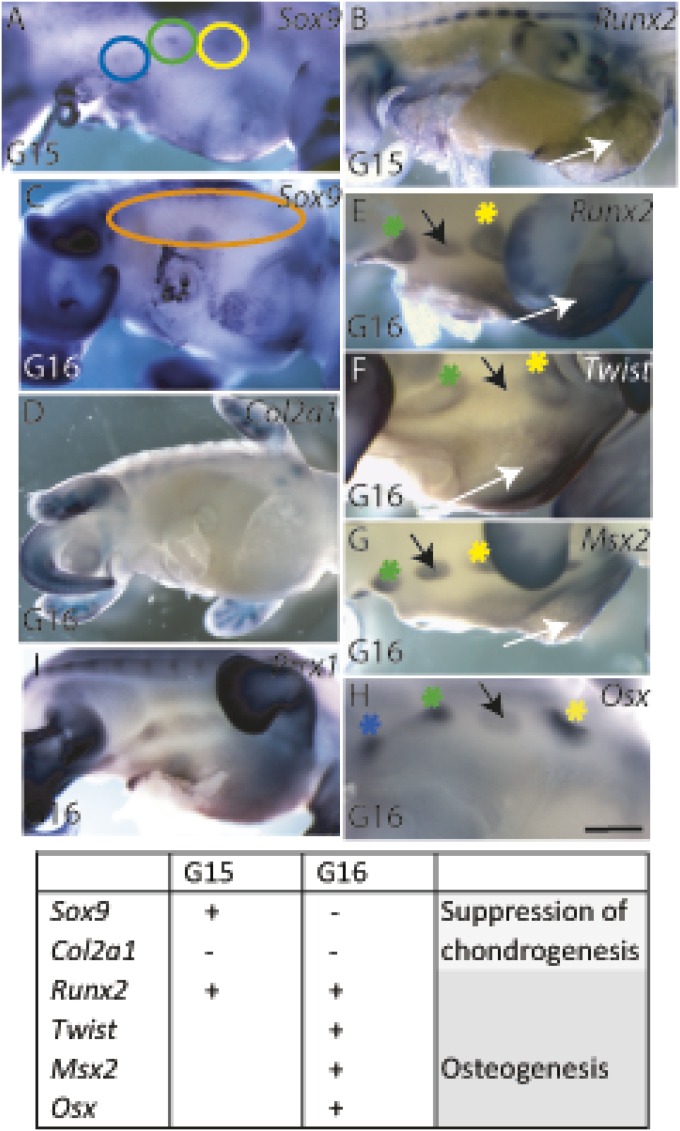Fig. 3.
Osteogenic fate of plastron bone condensations and ventral mesenchyme in turtles. (A and B) At G15, the plastron bone condensations and ventral mesenchyme exhibited osteochondrogenic potential by being Sox9 positive (circled in A) with minimal Runx2 expression (B). (C and D) At G16, the chondrogenic potential of both the plastron bone condensations (orange circle in C) and the ventral mesenchyme had been suppressed. (E–H) By G16, an osteogenic condensation for each plastron bone had formed at the lateral edges of the developing plastron and the central area of the ventral mesenchyme had an osteogenic identity. Runx2 was expressed throughout the condensations (E). Its suppressor Twist1 was expressed by osteoprogenitor and preosteoblast cells in osteogenic fronts at the periphery of the condensations (F). Low level of Twist expression located between hyo- and hypoplastral condensations, and Msx2 was expressed by preosteoblasts in the center of the condensations (G). The ventral mesenchyme had osteogenic identity (white arrows in E–G). Osterix (Osx) was expressed in the core of the condensations, indicating osteogenic differentiation (H). A transient osteogenic condensation (black arrows in E–H) may represent the mesoplaston. (I) Prrx1 was expressed in preskeletal mesenchyme at G16 in both the osteogenic plastron condensates and ventral mesenchyme. Asterisks are adjacent to condensations. Yellow, hyoplastron; green, hypoplastron; blue, xiphiplastron. (Scale bar, ∼250 μm.)

